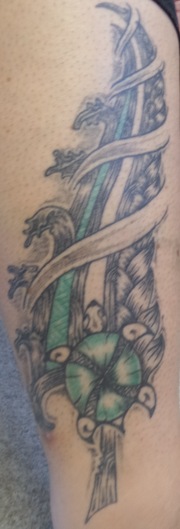Here is the link to the documentary on NZ education. It was well wort watching and thinking about how we as teachers might respond to this.
Four things worse then not being able to read….
http://www.huffingtonpost.com/gaye-groover-christmus/4-things-worse-than-not-l_b_9985028.html
This is an interesting article.
Sharing of learning stories
Kia ora ELP has created a closed Facebook page for teachers from both early childhood centres and primary schools to share their learning stories. Having this site will allow both sectors to see the connection through dispositional learning and the key competencies. Not only this but the rich learning that happens through play based inquiry will be highlighted for everyone.
Click the link below to join the conversation:
Inquiry Learning
Key Competencies, Assessment and Learning Stories
This book is a wonderful resource for primary teachers thinking about using learning stories to talk about the key competencies.
Peter Gray – Self directed learning
ERO Continuity of Learning
ERO Continuity of Learning Brochure A4 FINAL-1ERO Continuity of Learning FINAL (6)
I have uploaded the ERO Continuity of Learning report for everyone to be able to access easily. This will be the basis of our conversations on the 28th June.
There is the full report link and also a smaller brochure version of the report for you to read through.
ERO Continuity of Learning FINAL (6)
Hui notes
Kia ora koutou
Here is the link to the hui notes. It was wonderful to consider what a successful child looks like across both the early childhood and primary sector. The list of attributes, dispositions and values that you created is inside the presentation notes.
Losing Ourselves
Whakapapa story
Ka Hikitia Accelerating Success 2013-2017 says, “There is a strong link between well-being and achievement. Students’ well-being is strongly influenced by a clear sense of identity, and access and exposure to their own language and culture. Students do better in education when what and how they learn reflects and positively reinforces where they com20160414_102321 (1)e from, what they value and what they already know. Learning needs to connect with students’ existing knowledge. Identity, language and culture are an asset and a foundation of knowledge on which to build and celebrate learning and success.”
Recently while talking with a teacher I noticed her tattoo. Curious to know the story behind it I asked Lorraine if she would mind telling me what the tattoo represented. I was full on anticipation because I could see that this tattoo was certainly a story waiting to be told.
The story of the tattoo is Lorraine’s whakapapa. She was born in New Zealand hence the shape of the silver fern. Lorraine is of Cook Island Māori descent so she is represent by the turtle on the stem of the fern. Her father’s family come from two Pacific Islands. Rarotonga is represented by the right hand side of flax and Mauke (which is an atol) is represented by the waves. The four strands going across the tattoo are her four boys and her husband is the stem which roots them to the whenua. Lorraine’s husband is a New Zealand Māori. Lorraine told me that the family from Mauke is the chiefly line in the whānau.
As I listened to Lorraine’s story I understood that all the relationships with the land and the people are part of who she is. I also considered that when you understand that you are not just you on your own but that you are deeply connected to something bigger than you then this will give you the sense of belonging and a clear sense of identity (to use the words of Ka Hikitia). Imagine if we all understood that we each represent our past, present and future in this moment surrounded by people who love us that may not be standing with us in body but always by us within the essence of who we are – imagine how that must create a surety and confidence that moves us from I am me an island to I am me rich in potential, knowledge and experience.
The last part of Lorraine’s story is that one of her boys is about to become a father and this means there will be further additions to the tattoo. Inside each strand when a mokopuna is born Lorraine will tattoo a cultural flower or symbol to acknowledge that child’s ancestral line.
I am so grateful to Lorraine for sharing her story because it opened my understanding of what it means to be a Cook Island Māori but more than that I have grown my own understanding of the deep connectedness there is to people and places through whakapapa and how this can impact of the view we have of ourselves. Meitaki, thank you Lorraine.
Telling the story of the tattoo – the story of her whakapapa I think gives Lorraine a deep sense of connection and pride. This is what we want for all children within Aotearoa.
Back to Ka Hikitia which says, “Māori identity, language and culture recognises, acknowledges and validates Māori students as Māori. Māori organisations, hapū, whānau, iwi, parents and students are the kaitiaki (guardians) of Māori identity, language and culture. Understanding how identity, language and culture impact on Māori students’ learning and responding to this requires all stakeholders to develop a greater understanding of their own identity, language and culture and the ways in which they shape their lives.”
What does this mean for us as teachers?